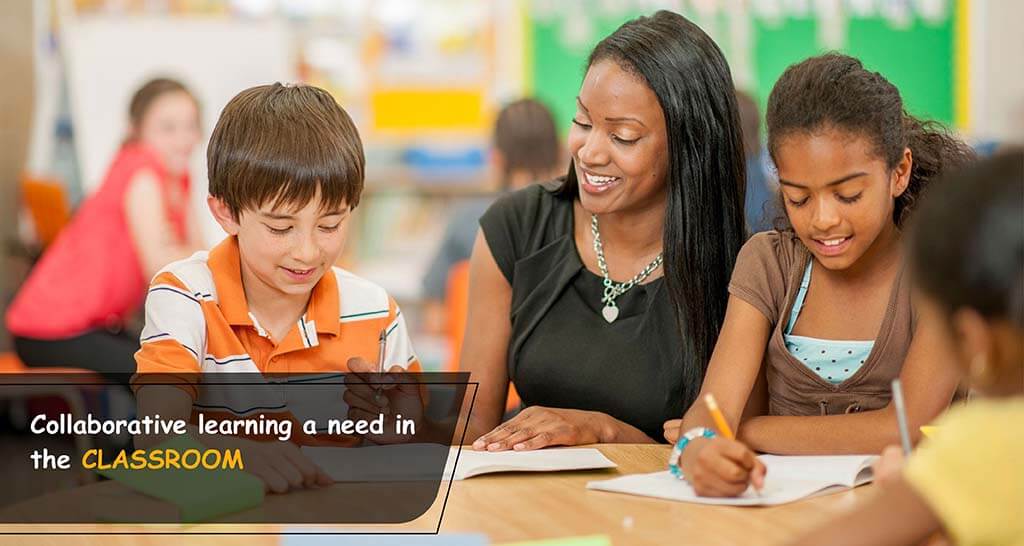A classroom is a microcosm of the world and is an excellent place to instill behaviors that will benefit pupils throughout their adult life. As Henry Ford aptly said, “coming together is the beginning; sticking together is development.” Collaboration is the key to success. Students must feel at ease working in groups.
Indeed, learning can only be meaningful when the process is tailored to the learner’s requirements, objectives, and skills. In reality, the emphasis of today’s education system has evolved from a teacher-centric strategy, in which the instructor is the primary keeper and diffuser of information, to a more student-centric approach, in which each student is at the helm of their learning process. However, this is not intended to encourage learners’ isolation from their classmates or instructors. Students should learn early that individual objectives may be advanced and improved via teamwork and involvement. Learners may critically examine their thinking in connection to the worlds of others to become practical problem solvers of the future.
Thus, adopting a collaborative learning method might assist instructors in instilling students’ life skills and critical thinking abilities.
How do we collaborate in the classroom?
Phenomenon-based learning is a comprehensive strategy that shifts the emphasis of learning from particular subjects to phenomena, issues, and events such as energy, media, and technology. Learning theories may lead to superficial knowledge. However, when actual activities are embedded in a pedagogical framework, learning may help to raise responsible citizens.
A teacher may propose an inter-disciplinary subject, such as the drinking and washing water source in their location, to a group of students and invite them to present on it. This would allow students to work individually as well as collaboratively. Discussion and cooperation within the team would aid in developing their communication abilities. Furthermore, the advantages of phenomenon-based learning are not restricted to collaborative learning but are supplemented by a constructivist approach and inquiry-based learning.
Furthermore, hands-on activities may assist students in learning in groups. Sharing equipment and other components might also help kids create a feeling of sharing resources in real life. School trips might benefit collaborative learning initiatives since students’ connections with classmates would not be confined to academics outside the classroom.
Collaborative Learning
Collaborative learning involves two or more people working together to grasp a shared learning topic and finish an everyday activity. They rely on each other’s resources, knowledge, and talents to complete the mission. Responsibility and failures, if any, are shared. They work individually on various factors and review each other’s work to increase output quality.
An unsure student should contact their peers before approaching instructors in a classroom environment. The purpose of such an activity is not to keep professors out of students’ learning processes but to encourage students to rely on their community’s collective expertise. This would help a pupil comprehend and cherish their neighbors’ inventiveness and give them fair credit. Teachers might provide challenging assignments to kids in the classroom and urge them to work in groups. Students could see their activities and ideas being questioned, giving them a chance to think through the gaps.
The Advantages of Collaborative Learning
Celebration of Diversity: A small group of students may be culturally and socially varied, so collaborative learning projects may open up the world to learners as they begin to receive a fresh perspective on life from their peers. Students also get to compare their lives and ideals to those of their peers and learn to accept diversity without being judgemental.
Interpersonal Development: In a group business, students must learn to deal with different individuals and connect to their peers so that the project at hand benefits from their organized interaction.
Confidence and communication: Collaborative learning projects from a young age may help kids build their confidence and self-esteem while also boosting their feeling of responsibility at work. The challenge of expressing their views, defending them, and cooperating with others to broaden their perspectives necessitates solid communication skills, which are enhanced by these activities.
It is not difficult to create a collaborative learning culture. The technique is neither time-consuming nor challenging to evaluate collaborative learning work. To carry it out, a teacher must be willing and open-minded. Furthermore, the availability of technology facilitates cooperation. Students may communicate with their classmates through social media or a learning management system. An essential advantage of collaborative learning is that it can fulfill the true aim of education – developing responsible citizens who can cooperate with their fellow citizens to solve complicated social, economic, and political challenges.










